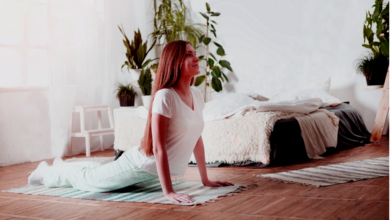Top Air Purifiers That Actually Improve Indoor Air Quality
Discover the top air purifiers that actually improve indoor air quality—HEPA filters, smart sensors & quiet operation for cleaner, healthier air.

Top air purifiers that actually improve indoor air quality are becoming essential appliances in modern homes as concerns about pollution, allergens, and respiratory health continue to rise. With many people spending up to 90% of their time indoors, the air we breathe inside can be filled with dust, pet dander, mold spores, and even harmful chemicals from household products. A high-quality air purifier can effectively filter out these contaminants, creating a cleaner, healthier living environment. But with so many models on the market, how do you choose the right one? This guide explores the best air purifiers available, their key features, and how they can make a real difference in your home’s air quality.
The right air purifier depends on factors like room size, filtration technology, and specific needs—whether you suffer from allergies, want to eliminate odors, or simply want cleaner air. From advanced HEPA filters to smart sensors that adjust purification levels automatically, today’s air purifiers offer a range of features designed to tackle different air quality challenges. By understanding what to look for, you can invest in a system that truly enhances your indoor air and supports better health for you and your family.
Top Air Purifiers That Actually Improve Indoor Air Quality
Why Indoor Air Quality Matters
The air inside our homes can be up to five times more polluted than outdoor air, according to the Environmental Protection Agency (EPA). Common indoor pollutants include dust mites, pet dander, mold spores, volatile organic compounds (VOCs), and even bacteria. Prolonged exposure to these contaminants can lead to respiratory problems, allergies, and long-term health issues.
Air purifiers play a crucial role in filtering out these harmful particles, ensuring that the air we breathe is clean and safe. Unlike simple ventilation, which may bring in outdoor pollutants, air purifiers actively trap and neutralize contaminants. This makes them an essential appliance for households, particularly for families with children, elderly members, or individuals with respiratory conditions.
Key Features to Look for in an Air Purifier
When shopping for an air purifier, understanding the key features can help you choose a model that truly improves your indoor air quality. With various technologies and specifications available, it’s important to know what makes one purifier more effective than another. Below, we break down the most critical factors to consider before making your purchase.
The Heart of Air Purification
The type of filtration system determines how effectively an air purifier can remove contaminants from your air. Look for these essential filter types: True HEPA Filters: The gold standard for air purification, True HEPA (High-Efficiency Particulate Air) filters capture 99.97% of particles as small as 0.3 microns, including dust, pollen, pet dander, and mold spores. Be cautious of terms like “HEPA-type” or “HEPA-like,” as these do not meet the same rigorous standards. Activated Carbon Filters: These filters specialize in adsorbing gases, odors, and volatile organic compounds (VOCs) from smoke, cooking, and household chemicals. If you need odor elimination, ensure the purifier has a substantial carbon layer. UV-C Light & Ionizers: Some advanced models include UV-C light to kill bacteria and viruses or ionizers to help particles clump together for easier filtration. However, these can produce trace amounts of ozone, which may irritate sensitive individuals.
Noise Levels
Air purifiers run continuously, so noise matters—especially in bedrooms or offices.Under 25 dB is Whisper-quiet (ideal for light sleepers). 30-50 dB is Moderate (acceptable for daytime use) 50+ dB is Loud (best for high-speed cleaning when you’re not in the room)
Many models feature a “sleep mode” that reduces fan speed (and noise) while maintaining filtration.
Top Air Purifiers for Improved Indoor Air Quality
Dyson Pure Cool TP04
The Dyson Pure Cool TP04 is a premium air purifier that doubles as a fan. It features a HEPA and activated carbon filter, effectively capturing allergens, gases, and odors. Its 360-degree filtration system ensures thorough air circulation, while the real-time air quality display keeps you informed. Though it comes at a higher price point, its sleek design and smart connectivity (via the Dyson Link app) make it a top choice for modern homes.
Cowey Air mega 400
For larger spaces, the Cowey Air mega 400 is an excellent option. It covers up to 1,560 square feet and uses a dual filtration system with a True HEPA filter and an activated carbon layer. Its auto mode adjusts fan speed based on air quality, and the energy-saving feature ensures efficiency. Users praise its quiet operation and low maintenance cost.
Levit Core 300
A budget-friendly yet powerful option, the Levit Core 300 is perfect for small to medium rooms. It features a True HEPA filter, removing 99.97% of airborne particles. Its compact design and whisper-quiet operation (under 24 dB) make it ideal for bedrooms. While it lacks smart features, its affordability and efficiency make it a popular choice.
Isaira HealthPro Plus
For those with severe allergies or asthma, the Isaira HealthPro Plus is one of the best medical-grade air purifiers. It uses a Hyper HEPA filter, capturing particles as small as 0.003 microns—far smaller than standard HEPA filters. Though expensive, its exceptional filtration and durable build justify the cost for health-conscious users.
Maintenance and Longevity of Air Purifiers
To ensure optimal performance, regular maintenance is essential. Most HEPA filters need replacement every 6 to 12 months, while activated carbon filters may require more frequent changes depending on usage. Some models, like the Cowey Air mega, have washable pre-filters, reducing long-term costs.
Additionally, placing the air purifier in the right location maximizes efficiency. Avoid corners or obstructed areas; instead, position it in an open space where air circulates freely. Running the purifier on auto mode or at medium speed continuously ensures consistent air quality improvement.
Read More: The Link Between Gut Health and Mental Health: What You Need to Know
Conclusion
Top air purifiers that actually improve indoor air quality are more than just appliances—they’re investments in your health and wellbeing. By effectively removing pollutants, allergens, and harmful particles from your home’s air, these devices create a cleaner, safer breathing environment for you and your family. Whether you choose a smart-enabled model with real-time air quality monitoring or a budget-friendly option with robust filtration, the right air purifier can make a noticeable difference in respiratory health, sleep quality, and overall comfort.
As indoor air pollution continues to be a growing concern, having one of the top air purifiers that actually improve indoor air quality has become essential for modern living. From reducing allergy symptoms to eliminating stubborn odors, these powerful devices offer a practical solution for healthier indoor spaces. By selecting an air purifier that matches your specific needs and maintaining it properly, you can enjoy the benefits of purified air for years to come—making every breath you take at home fresher and cleaner
FAQs
How often should I replace my air purifier’s filter?
Most HEPA filters should be replaced every 6-12 months, while carbon filters may need replacement every 3-6 months, depending on usage.
Can air purifiers help with pet allergies?
Yes, air purifiers with True HEPA filters effectively capture pet dander, reducing allergy symptoms.
Do air purifiers consume a lot of electricity?
Most modern air purifiers are energy-efficient, consuming about the same power as a standard fan.
Where is the best place to put an air purifier?
Place it in an open area, away from walls or furniture, to ensure optimal airflow and purification.
Are expensive air purifiers worth it?
High-end models offer advanced features like smart sensors and superior filtration, making them worthwhile for those with severe allergies or large spaces.











